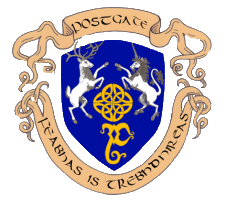Scottish Luckenbooth ring in 14K with natural ruby, By Suzan Postgate size 6 1/2
Scottish Luckenbooth ring in 14K with natural ruby, by Suzan is a ring based on the luckenbooth brooches that have been a Scottish tradition for hundreds of years. We hope it gives it’s wearer pleasure and a link to their cultural history. Here is link to more of our Scottish designs: https://postgatejewelers.com/scottish-jewelry/
The ring was designed and hand made by Suzan. The ring can be ordered with most stones in most ring sizes. This is the smallest version of the luckenbooth ring that Suzan makes. It is designed to be comfortable and easy to wear. It slides easily into and out of pockets without snagging. Check out our facebook page if you are interested in our designs and how we make our jewelry: https://www.facebook.com/Postgate-Fine-Jewelers-111540785537658/photos/?view_public_for=111540785537658&ref=page_internal Custom orders will be sent out in two to six weeks depending upon our schedule. If you would like more information on ordering please click here. You to learn more and Her small luckenbooth ring can be ordered in silver or any gold alloy that we use. You can choose almost any stone to set into it or have the ring made without a stone. A sterling silver version is costs about $60.00. The luckenbooth brooch dates from the late sixteenth century. It originated as a pin that merchants in Edinburgh, who sold their goods out of locked booths, wore to show that they had purchased a license to sell along the “Royal Mile.” The first luckenbooth brooches were very small. A tradition developed in which the luckenbooth was given to a man’s sweetheart on their betrothal. It was also considered a lucky charm, that would protect its wearer against the evil eye. Among the other powers attributed to the luckenbooth was easing the pain of childbirth and ensuring a good supply of breast milk when pinned to a woman’s petticoats near the left thigh. If pinned to a baby’s shawl, it will protect the child from being stolen by fairies. During the 18th and 19th centuries the luckenbooth became larger and more elaborate often inscribed on the back with biblical quotes or the names or initials of the couple and the date of their wedding. In the late 1800’s the intertwined hearts that form the lower half of the brooch, came to resemble the letter M. Fleur de lis and thistles, also became common elements. These became known as Mary’s Brooches or “Queen Mary’s Brooches”. This was because Mary Queen of Scots’ husband Lord Darnley, gave her one. Most contemporary luckenbooth brooches are in the form of two intertwined hearts topped with a crown. In Victorian times they were often set with garnets. Garnets were believed to have a positive influence on love and symbolized love, constancy, and friendship. The Victorian versions of the luckenbooth brooch were decorated with gems of different colors. Scottish fur traders exchanged simple silver luckenbooths for furs with Native Americans who loved them. Some of these brooches have been passed down for generations in those native families!Scottish Luckenbooth ring, Details:
Delivery:
Variations:
A bit of Luckenbooth history:
The Luckenbooth in America:










Marlitta Stoddard –
Love the Luckenbooth ring. When will you have more or can I custom order.